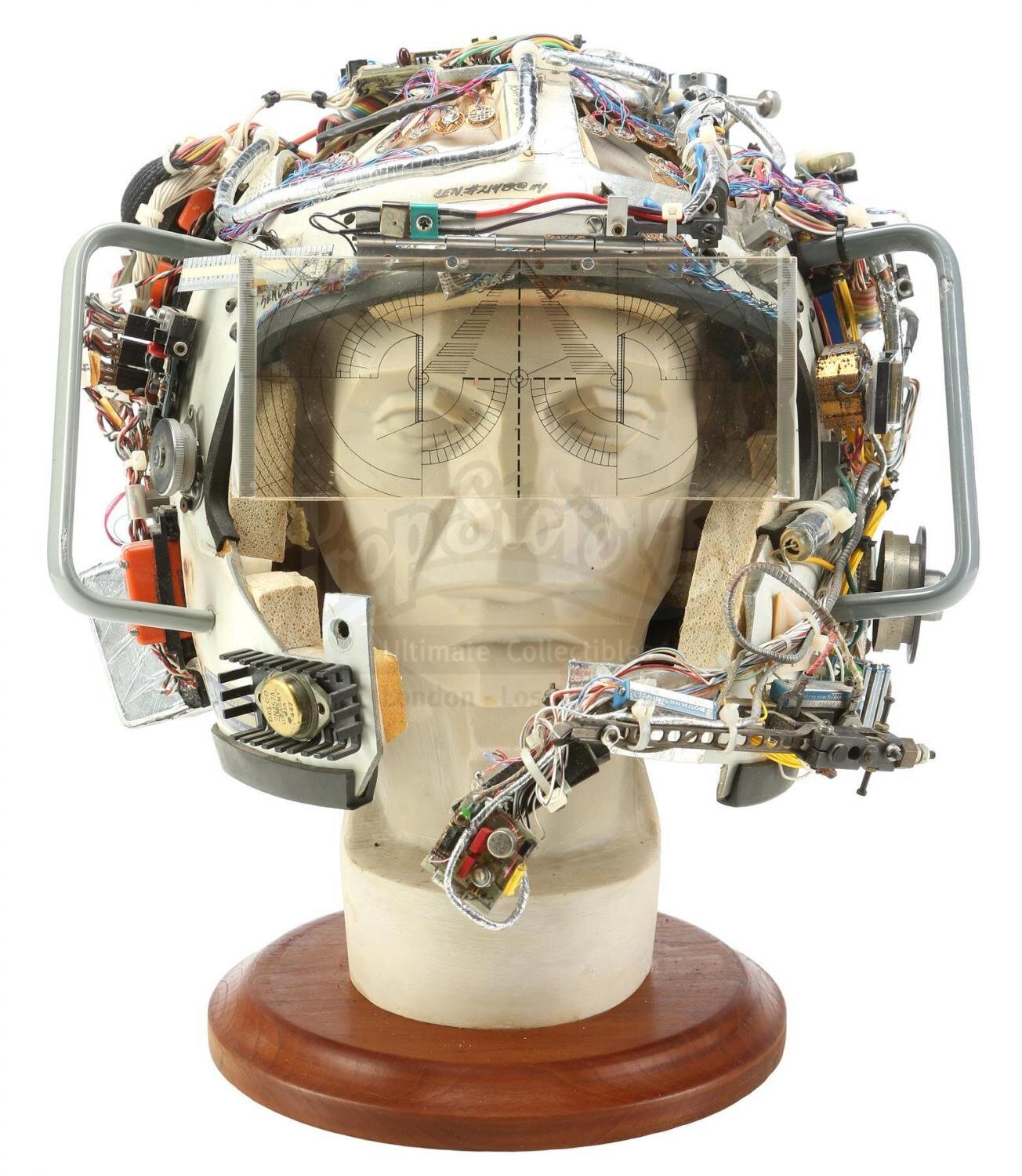
Future Tech ‘73
⫥ All the Best Toys
Back in 3rd Edition GURPS, GURPS Steampunk included the concept of a Tech Level × (+1) which is a great way to think of SANDMAN’s access to bleeding-edge tech. You sit smack dab in the center of TL 7 right now (Nuclear Age) but SANDMAN occasionally has access to tech that's years (NOT decades) ahead of its time. So that means that every now and again you’ll have access to early TL 8 tech. We’re going to do this on a case-by-case basis. I may actually use the rules for “New Inventions” on B473 to see whether and how quickly the SANDMAN boffins could hack something together.
⫥ Drugs
Mopers
↭ The Madness Dossier, p. 46.
SANDMAN only developed mopers officially after MK-ULTRA was disbanded in 1973; however it is likely that past collaboration between SANDMAN and MK-ULTRA means that most if not all of the mopers detailed on page MD46 already exist in 1973.
Combat Amphetamines
↭ The Madness Dossier, p. 46.
These are widely available, probably already in the “blues/greens/reds/yellows” schema seen on page MD46. Modafinil was discovered in the late '70s as a metabolite of the earlier drug Adrafinil (discovered in France in 1974); most likely SANDMAN and/or MK-ULTRA developed Adrafinil in its secret labs in the mid-to-late '60s and released it to the public through the French laboratory. Regardless, Adrafinil is functionally equivalent to Modafinil as it appears in the MD sourcebook.
Agent 17
↭ The Madness Dossier, p. 47.
The US Army has been experimenting with aerosolized incapacitants since the early '50s: while Agent 17 itself does not exist in 1973, plenty of BZ-derived chemicals with practically identical profiles to Agent 17 do.
Renshaw Tachistoscopic
Training Device (Model E)
Samuel Renshaw (1892–1981) was an American psychologist whose work became famous for a short period of time during World War II when he taught sailors to identify enemy aircraft in a split second, using tachistoscopic training. He generally worked with fast-reading and enhancing the latent ability of the mind. He believed that most people used only one-fifth of their available mind-power to process information. By using methods of flashing pages he produced students who could read as fast as 1,200 to 1,400 words per minute.
⫥ Gear
Anti-Anunnaku Shield
↭ The Madness Dossier, p. 49.
The 1973 version looks like a giant helmet with all kinds of wiring and electronics. Not subtle.
Brain Hacking
↭ The Madness Dossier, p. 50.
While the 1973 Project does not have “terabyte drives preloaded with screen memories,” most of the Brain Hacking activities in this section are available to SANDMAN. Again, I'll likely be doubling times, penalties, and bonuses to resist to reflect the more primitive technology. The Cheval program is just getting underway in the early ‘70s, with a certain URIEL driver/operative one of its earliest test subjects/prototypes …
Broakleys
↭ The Madness Dossier, p. 49.
Not available in 1973; too high-tech even for TL7+1.
EMF Detector
↭ The Madness Dossier, p. 47.
Likely heavier, bulkier, and funkier-looking/more solid state than contemporary handheld “PK meter” style detectors, but absolutely available in '73.
Field Wetware Kit
↭ The Madness Dossier, p. 47.
Again, given our campaign’s Tech Level of TL7+1, the 1973-era Wetware Kit is likely much bulkier, given the state of microelectronics, even in the advanced labs of SANDMAN. Fewer laptop screens, more oscilloscopes. Functionally the same, though.
Hypnagogic Flash
↭ The Madness Dossier, p. 47.
Likely fine as-is, although I'd make it a tiny bit bigger and it probably looks like a bigger version of an old-school '70s Polaroid flash cube. I used to be fascinated by those as a kid.
Ikoter
↭ The Madness Dossier, p. 47.
The Samoyed of Siberia occasionally enter a mental state called ikota, a sudden trance followed by suggestibility, from whence Sandman techs took the name of this device. (Field agents also call it the “I.K.” or the “daser.”)
Kenneth Hite
GURPS Horror: The Madness Dossier
Bulkier and funkier again. Functionally this means that only “pistol” and “rifle” sized ikoters exist in 1973: no holdout models. Resistance roll is Will-2 for the pistol model, Will-3 for the rifle. No experimental fear/rage models either.
Pistol: Damage Will-2 Aff, Acc 3, Range 10/30, Weight 1.8, RoF 1, Shots 5(3), ST 4, Bulk -2, Rcl 1, LC 1
Rifle: Damage Will-3 Aff, Acc 6, Range 23/70, Weight 10, RoF 1, Shots 16(3), ST 8, Bulk -6, Rcl 1, LC 1
Implant Chips
↭ The Madness Dossier, p. 48.
The microprocessor was introduced to the public in 1970-1971, in Silicon Valley (and in LA and in Texas). It’s likely that SANDMAN research facilities helped seed this technology to the tech industry. Brain Hacking is a big part of contemporary Madness Dossier games but in 1973 it's a fair bit dicier, despite real-world experimentation into putting electrodes into people's brains. I’m willing to play a lot of this by ear but basically I would imagine that effects of 1973 SANDMAN personality chips are radically simpler (the choice of Disadvantages will likely be limited to very basic fight-fuck-flee type emotions), much more time-consuming and difficult to implement (double all penalties and Brain Hacking times for the Wetware Hacker/halve all penalties for the poor patient to resist), and no passive surveillance possible.
Irruptor Disruptor
↭ The Madness Dossier, p. 48.
“Experimental” in the 2010s means it does not exist in 1973. Sorry.
Mental Carrier Tone Generator
↭ The Madness Dossier, p. 49.
Probably a goofy-looking pair of headphones/microphone in 1973 and not a slick unobtrusive Bluetooth headset.
Microwave Auditory Effect-ser (“MAEser”)
↭ The Madness Dossier, p. 49.
Same as the irruptor disruptor.
Noise-Canceling Earpieces
↭ The Madness Dossier, p. 50.
Includes the two-way radio and microphone, does not include GPS (obviously).
Subdermal Injector
↭ The Madness Dossier, p. 49.
1970s microchips are too big to be inserted this way. SANDMAN drugs are probably injected using tiny needles on the tips of umbrellas and hollow rings, the typical CIA playbook.
Tachist 3.0
↭ The Madness Dossier, p. 49.
Let’s say Tachist 1.0 exists in 1973, using microfiche and monochrome computer monitors. You must have the Renshaw Method as an Advantage to use it.




